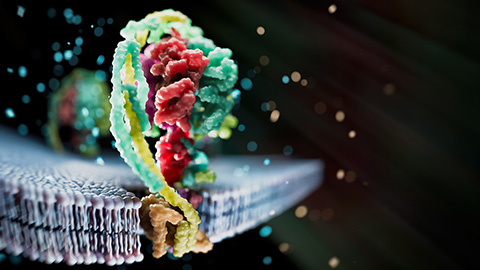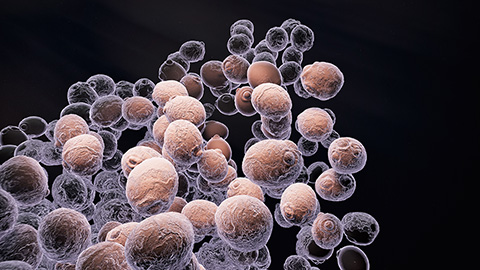Simple trick could improve accuracy of plant genetics research
Researchers have published a simple trick that improves the accuracy of techniques that help us understand how external variables – such as temperature – affect gene activity in plants.
“There are really two contributions here,” says Colleen Doherty, corresponding author of a paper on the work and an associate professor of molecular and structural biochemistry at North Carolina State University. “First, we’re raising the visibility of a problem that many of us in the plant research community were unfamiliar with, as well as highlighting the solution. Second, we’ve demonstrated that addressing this problem can make a significant difference in our understanding of gene activity in plants.”

At issue is a technique called RNA-seq analysis, which is used to measure changes in gene activity – i.e., when genes are actively transcribing to produce proteins.
“We use RNA-seq analysis to assess how plants respond to various stimuli, or changes in their environment,” Doherty says. “It’s used widely because it’s a relatively easy and inexpensive way to monitor plant responses.”
For example, researchers can use RNA-seq analysis to see which genes are turned on when a plant is experiencing drought conditions, which then informs the development of new plant varieties that are drought resistant.
But there’s a specific challenge related to RNA-seq analysis, which Doherty and her collaborators ran into by accident.
“We were monitoring how plants respond to different temperatures at multiple times of day, and the results we got were wildly divergent,” Doherty says. “We initially thought we might be doing something wrong. But when we began looking into it, we learned that animals and yeasts are known to have global changes in transcription based on variables such as the time of day or nitrogen deprivation.”
In other words, researchers want to see how specific variables – such as increased temperature – affect transcription in specific genes. But there are some variables – like time of day – that can increase or decrease transcription in all the genes. This can throw off researchers’ ability to draw conclusions about the specific variables they want to study.
“Luckily, we found that this problem is sufficiently well-established among researchers who work on non-plant species that they have developed a method to account for it, called an artificial spike-in,” Doherty says. “These and similar techniques have been used in plant science in other contexts and when using older techniques and technologies. But for whatever reason, our field didn’t incorporate artificial spike-ins into our methodology when we adopted RNA-seq analysis.”
Artificial spike-ins make use of pieces of foreign RNA that are unlike anything in the plant’s genome, meaning that the foreign RNA will not be confused with anything the plant itself produces. Researchers introduce the foreign RNA into the analysis process at the beginning of the experiment. Because global changes in transcription will not affect the foreign RNA, it can be used as a fixed benchmark that allows researchers to determine the extent to which there is an overall increase or decrease in RNA that the plant itself is producing.
“When we used artificial spike-ins to account for global changes in transcription, we found that the differences in plants exposed to temperature changes at different times of day were actually even greater than we anticipated,” Doherty says.
“The artificial spike-in gave us more accurate information and greater insight into how plants are behaving at night – since we found that global transcription was higher at night. Before we adopted the use of artificial spike-ins, we were missing a lot of what was happening at night.
“Artificial spike-ins are an elegant solution to a challenge many of us in the plant research community didn’t even know was there,” Doherty says. “We’re optimistic this technique will improve the accuracy of transcriptional analysis in the wide variety of conditions that can affect global transcription in plant species. And that, in turn, may help our research community garner new insights into the species we study.
“We didn’t develop this solution – artificial spike-ins – but we really hope it garners more widespread use in plant science.”
This article is republished from North Carolina State University News. Read the original here.
Enjoy reading ASBMB Today?
Become a member to receive the print edition four times a year and the digital edition monthly.
Learn moreGet the latest from ASBMB Today
Enter your email address, and we’ll send you a weekly email with recent articles, interviews and more.
Latest in Science
Science highlights or most popular articles

Designing life’s building blocks with AI
Tanja Kortemme, a professor at the University of California, San Francisco, will discuss her research using computational biology to engineer proteins at the 2026 ASBMB Annual Meeting.

Cholesterol as a novel biomarker for Fragile X syndrome
Researchers in Quebec identified lower levels of a brain cholesterol metabolite, 24-hydroxycholesterol, in patients with fragile X syndrome, a finding that could provide a simple blood-based biomarker for understanding and managing the condition.

How lipid metabolism shapes sperm development
Researchers at Hokkaido University identify the enzyme behind a key lipid in sperm development. The findings reveal how seminolipids shape sperm formation and may inform future diagnostics and treatments for male infertility.

Mass spec method captures proteins in native membranes
Yale scientists developed a mass spec protocol that keeps proteins in their native environment, detects intact protein complexes and tracks drug binding, offering a clearer view of membrane biology.

Laser-assisted cryoEM method preserves protein structure
University of Wisconsin–Madison researchers devised a method that prevents protein compaction during cryoEM prep, restoring natural structure for mass spec studies. The approach could expand high-resolution imaging to more complex protein systems.

Method sharpens proteome-wide view of structural changes
Researchers developed a method that improves limited proteolysis coupled with mass spectrometry, separating true changes from abundance or splicing effects.

